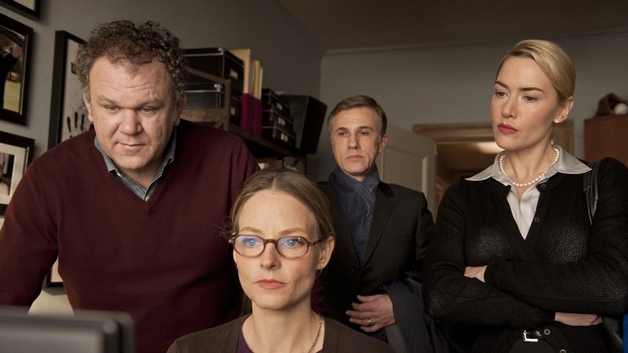There have been great film versions of plays, and disappointing adaptations too. What is required to make a good transition from stage to screen?
After seeing Carnage,
I emerged having been entertained but with one nagging criticism on my mind: it
was stagey. Yasmina Reza’s play “The God of Carnage” arrived on the big screen
as a funny, well-acted, good piece of entertainment, but one that just isn’t
very cinematic.
There have been some great films based on plays, such as One Flew Over the Cuckoo’s Nest, Casablanca and various screen adaptations of Shakespeare. There have also been some adaptations which just don’t
feel at home on the big screen. Doubt
and The History Boys were two prime
examples of films which still felt constrained by the limitations of a
Proscenium Arch.
There is an obvious difference between those two groups of
films: scope. Carnage, Doubt and The History Boys are all based on excellent plays, but they are
plays on a small scale. They generally stick within one location and feature
characters talking to each other within rooms. These are the sort of situations
which demand the person-to-person intimacy that only the live, onstage
experience can provide. The other films have got more interesting (and often
more varied) locations than simple sitting rooms, offices or classrooms, as
well as big set-piece moments in each; the sort of situations which set pulses
racing when converted into images on the big screen and accompanied by full
surround sound.
Is the key to stage adaptations for screen that you have to
find those which are capable of such an adaptation? Well, no. If one looks at the
recent adaptation of The Deep Blue Sea,
a very intimate stage play, you can see that director Terence Davies has kept
the heart of the play and its themes, but has changed the structure to make it
more cinematic. He uses the tools which cinema makes available to him to full
effect. Flashbacks, sound design, the meticulous construction of a scene and
careful cinematography all contribute to making that adaptation cinematic.
However, if you take the adaptation of The History Boys, director Nicholas Hytner seems to be aching to
make it more cinematic. There is a moment when the boys visit an abbey ruin
which seems to be an attempt to broaden the film’s horizon, but it’s
superfluous to requirements as a sequence and just doesn’t work. It certainly
doesn’t help the problem of the poor cinematography. It looks like it’s been
filmed on an old camcorder. The story and the production values contribute to
make it feel more like a TV movie than anything else.
As for Carnage,
it is entertaining and funny and brilliantly acted, with John C. Reilly
stealing the show, but it looks like Roman Polanski has turned up with a
camera, some actors and a script and has just set about filming the play. That’s
fine as it makes a decent way to pass 80 minutes. It’s just not a cinematic
experience. To achieve that, you need be prepared to throw out the structure of
the play and make something which is designed for the big screen. Not all plays
are able to make this transition. With Carnage
though, it just doesn’t seem like Polanski gave it much of a chance to make the
jump.

No comments:
Post a Comment